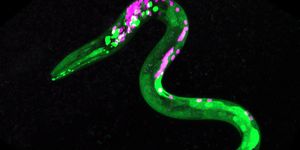10-year old immune cells still activate and target infection
Can cells live forever? The scientific community previously thought that most mammalian cells live through a maximum of 60 proliferative cycles. The number of finite cell cycles has been shown by Dr. Leonard Hayflick in his famous experiments culturing cells in vitro. His observation demonstrated that cells have a finite limit, compared to the famed French surgeon Dr. Alexis Carrel, who supported the idea that cells are immortal. Dr. Frank Macfarlane Burnet further solidified Dr. Hayflick's theory in his 1974 book Intrinsic Mutagenesis, where he upheld Hayflick's work and coined the phenomenon the "Hayflick Limit." The Hayflick Limit has since been widely accepted and commonly understood as a foundational principle in cell biology. However, an article published this year is making us question the mortality of cells.
A recent study by Dr. David Masopust from the University of Minnesota demonstrated that memory T cells can survive and continually activate for ten years. This finding is paradigm-shifting and has not only biological impacts on the field of T-cell biology but clinical and therapeutic implications. T cells are immune cells responsible for fighting infections in the body and belong to the adaptive immune system. Different types of T cells associated with specific responsibilities allow the body to fight disease and maintain homeostasis. In his research article, Masopust investigated CD8+ memory T cells, which are commonly responsible for the direct lysis of infected cells. These cells are part of the adaptive immune system, particularly the memory arm responsible for maintaining T cell reserves with specific antibodies to target a disease the body has previously encountered. Adaptive immunity is why after exposure to an infection, your body is more likely to recover once re-infected at a later date.
The critical component of this work includes activating memory T cells over ten years. Specifically, Masopust and colleagues continually activated memory T cells three times every 60 days in mice. Once T cells become activated, they function to lyse infections. A common limit of immunotherapies includes T cell loss of function through suppressive mechanisms dependent on the disease. However, Masopust and colleagues discovered that the activated memory T cells can still function to fight off infections.
Masopust's extension of T cell longevity contradicts previously recognized principles in T cell biology and cell aging. The implications include improved concepts regarding cell survival and aging, T-cell therapeutic intervention in chronically ill patients, and immunotherapies for cancers. Although this is one article, the concept that Masopust could boost and activate T cells in such an extended period will alter how we view T cell research in the next 15 years. By better understanding T cell biology, we can improve therapies and chronically ill patients' overall survival.
Sources: The Embryo Project, Nature, University of Minnesota








